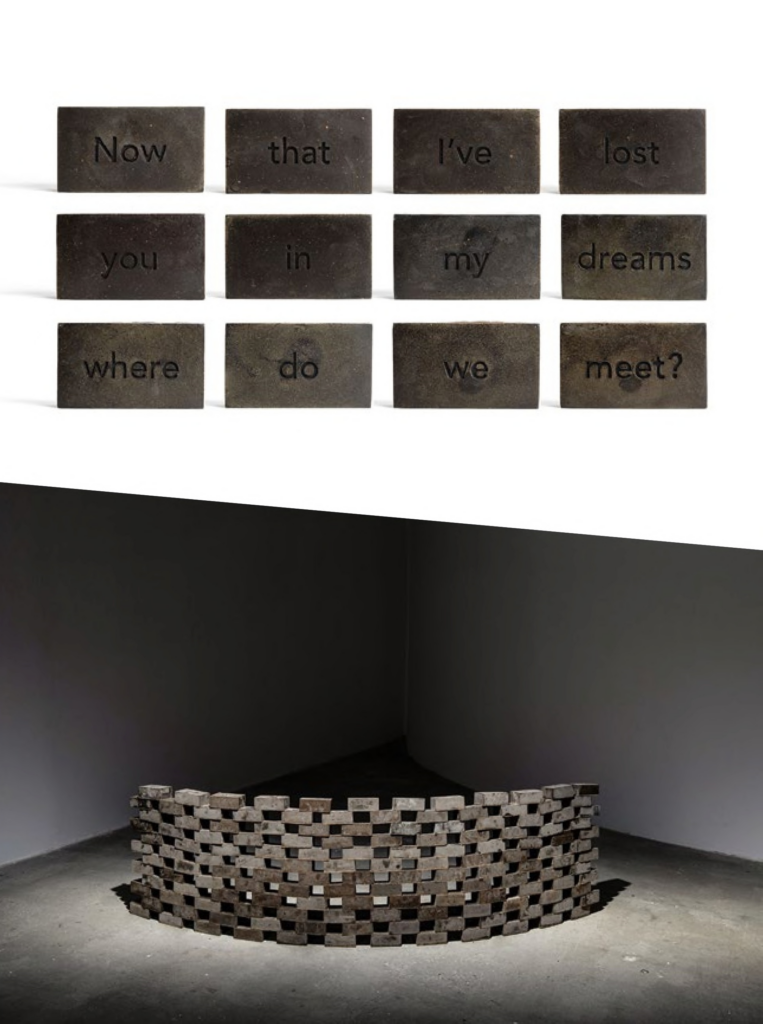SARA ABDU
Born 1993 in Jeddah, Saudi Arabia, where she lives and works
Now That I’ve Lost You in My Dreams, Where Do We Meet?
2021/2024

Sara Abdu’s practice is grounded in an exploration of the subconscious, the self, memory, and mortality. At the core of her installations, drawings, and videos is an attempt to grasp an experience of the infinite and understand the workings of the mind, whether by imagining dream-like scenarios or creating meditative spaces of contemplation. Her work often draws on histories and materials particular to her cultural heritage, such as traditional henna, which she has used in place of ink. Born to Yemeni parents, she studied graphic design and digital art at the Future Institute of Higher Education Training in Jeddah, and English language and literature at the Arab Open University. In 2017, she was an artist in residence at Cité internationale des arts in Paris.
The installation Now That I’ve Lost You in My Dreams, Where Do We Meet? (2021) is a plea addressed to Abdu’s late uncle, who appeared repeatedly in her dreams after his death. The title of the work marks the point when these dreams faded, and her uncle was no longer present in this space of memory. Consisting of handmade soap bars stacked into a wall-like form, the installation is inspired by the traditional soap factories of the Levant. Each brick-shaped bar is inscribed with one word from the work’s title. Made from natural ingredients including sidr powder and camphor crystals, the materiality of the work—within the context of her uncle’s death—is the artist’s ode to the Islamic rituals of washing the body of the deceased before burial. Forming an architecture of the title’s repeating phrase, the stacked blocks form a tower which visitors can walk around and absorb the permeating scent of the soap. By circulating the exhibition space, inhaling and re-inhaling, viewers absorb this scent associated with departure. For Abdu, memory, evoked by smell, is closely associated with healing. Open-ended and full of longing, the words of the title are repeated in an almost meditative pattern. Posing this unanswerable question—again and again—becomes a confrontation with finality and a simultaneous attempt to prolong the fleeting moment of farewell. Excavating the rituals of death, the work unfolds the dream as a subconscious space for processing loss.
